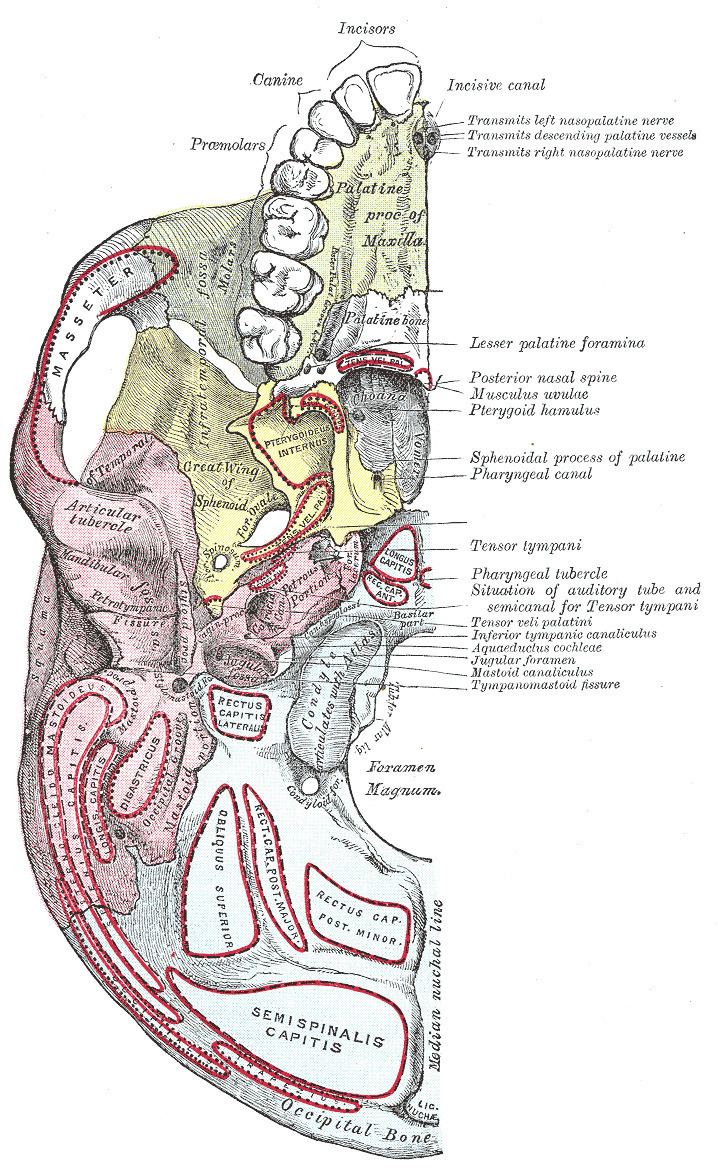Latin pars horizontalis FMA 52901 | TA A02.1.13.013 | |
 | ||
The horizontal part of the palatine bone (horizontal plate) is quadrilateral, and has two surfaces and four borders.
Contents
Surfaces
The superior surface, concave from side to side, forms the back part of the floor of the nasal cavity.
The inferior surface, slightly concave and rough, forms, with the corresponding surface of the opposite bone, the posterior fourth of the hard palate. Near its posterior margin may be seen a more or less marked transverse ridge for the attachment of part of the aponeurosis of the Tensor veli palatini.
Borders
The anterior border is serrated, and articulates with the palatine process of the maxilla.
The posterior border is concave, free, and serves for the attachment of the soft palate. Its medial end is sharp and pointed, and, when united with that of the opposite bone, forms a projecting process, the posterior nasal spine for the attachment of the Musculus uvulæ.
The lateral border is united with the lower margin of the perpendicular part, and is grooved by the lower end of the pterygopalatine canal.
The medial border, the thickest, is serrated for articulation with its fellow of the opposite side; its superior edge is raised into a ridge, which, united with the ridge of the opposite bone, forms the nasal crest for articulation with the posterior part of the lower edge of the vomer.
